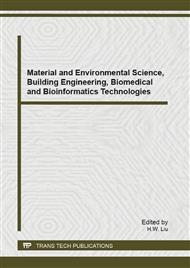p.189
p.193
p.198
p.202
p.206
p.211
p.215
p.219
p.223
Wind-Induced Vibration Control of Benchmark Model with Damper
Abstract:
Based on 76-storey Benchmark model, the optimization objective including displacement reduction index and acceleration reduction index is given under the effect of wind-induced vibration, by which kinds of dampers are optimally designed based on Genetic Algorithm. The optimization results show that the peak acceleration, peak displacement and peak storey drift of structure are remarkably reduced and kinetic energy and deformation energy are reduced significantly. It means optimized dampers have achieved good effect on wind-induced vibration control of the structure.
Info:
Periodical:
Pages:
206-210
Citation:
Online since:
September 2013
Authors:
Price:
Сopyright:
© 2013 Trans Tech Publications Ltd. All Rights Reserved
Share:
Citation:


